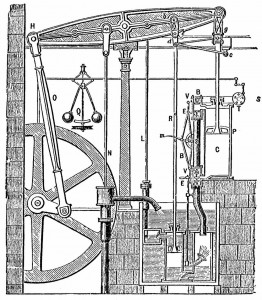Research areas
In brief the research fields are the following:
- continuum mechanics and thermodynamics,
- mathematical analysis of partial differential equations,
- numerical analysis and computer simulations,
- matrix analysis.
We strive for mathematically rigorous description of natural phenomena on all levels of the mathematical modelling – development of the mathematical model, study of its mathematical properties, design of suitable numerical methods and finally computer simulations. We think that the successful description of natural phenomena requires excellence on all levels. The existence of the Center allows us to combine and quickly disseminate the state-of-art results in all these fields, and to achieve the optimal and mathematically well-founded description of given natural phenomena.
Keywords: mathematical modelling, fluid a solid mechanics, continuum thermodynamics, partial differential equations, weak solution, function spaces, discretization of partial differential equations, discontinuous Galerkin method, a posteriori error estimates, numerical linear algebra, Krylov subspace methods, preconditioning
Books
Center members have made significant contributions to the research fields. Some of the results are summarized in the following books published by the Center members.
- Málek, J.; Strakoš, Z.: Preconditioning and the Conjugate Gradient Method in the Context of Solving PDEs, SIAM Spotlight Series, SIAM, Philadelphia, ISBN 978-1-611973-83-9, 2015.
- Liesen, J.; Strakoš, Z.: Krylov subspace methods: Principles and analysis, Numerical Mathematics and Scientific Computation, Oxford Science Publications, Oxford, 2012.
- Feireisl, E.; Pražák, D.: Asymptotic behavior of dynamical systems in fluid mechanics, AIMS Series on Applied Mathematics, 4, American Institute of Mathematical Sciences, Springfield, 2010.
- Feireisl, E.; Novotný, A.: Singular limits in thermodynamics of viscous fluids, Advances in Mathematical Fluid Mechanics, Birkhäuser Verlag, Basel, 2009.
- Feireisl, E.: Dynamics of viscous compressible fluids, Oxford Lecture Series in Mathematics and its Applications, 26, Oxford University Press, Oxford, 2004.
- Feistauer, M.; Felcman, J.; Straškraba, I.: Mathematical and computational methods for compressible flow, Numerical Mathematics and Scientific Computation, Clarendon Press, Oxford University Press, Oxford, 2003.
- Haslinger, J.; Mäkinen, R. A. E.: Introduction to shape optimization. Theory, approximation, and computation, Advances in Design and Control, 7, Society for Industrial and Applied Mathematics (SIAM), Philadelphia, PA, 2003.
- Haslinger, J.; Miettinen, M.; Panagiotopoulos, P. D.: Finite element method for hemivariational inequalities. Theory, methods and applications Nonconvex Optimization and its Applications, 35, Kluwer Academic Publishers, Dordrecht, 1999.
- Málek, J.; Nečas, J.; Rokyta, M.; Růžička, M.: Weak and measure valued solutions to evolutionary PDEs, Applied Mathematics and Mathematical Computation, 13. Chapman & Hall, London, 1996.
- Feistauer, M.: Mathematical methods in fluid dynamics, Pitman Monographs and Surveys in Pure and Applied Mathematics, 67, Longman Scientific & Technical, Harlow; copublished in the United States with John Wiley & Sons, New York, 1993.
Journal publications
The list of publications can be found here.
Lecture Notes
The "old" Center, see history of the Center, has been very active in publishing notes from lectures delivered by foreign researchers during their long term stays in the Center. We would like to pursue this tradition.
Schools
The Center members organize or participate in organization of many scientific meetings and schools focused on various subjects.
The school with longest tradition is the school Mathematical theory in fluid mechanics that is organized biannually since 1997. The other traditional school is the International School on Evolution Equations (EVEQ) that is, since 1984, run every four years. (The webpages of the last two schools can be found here and here).
